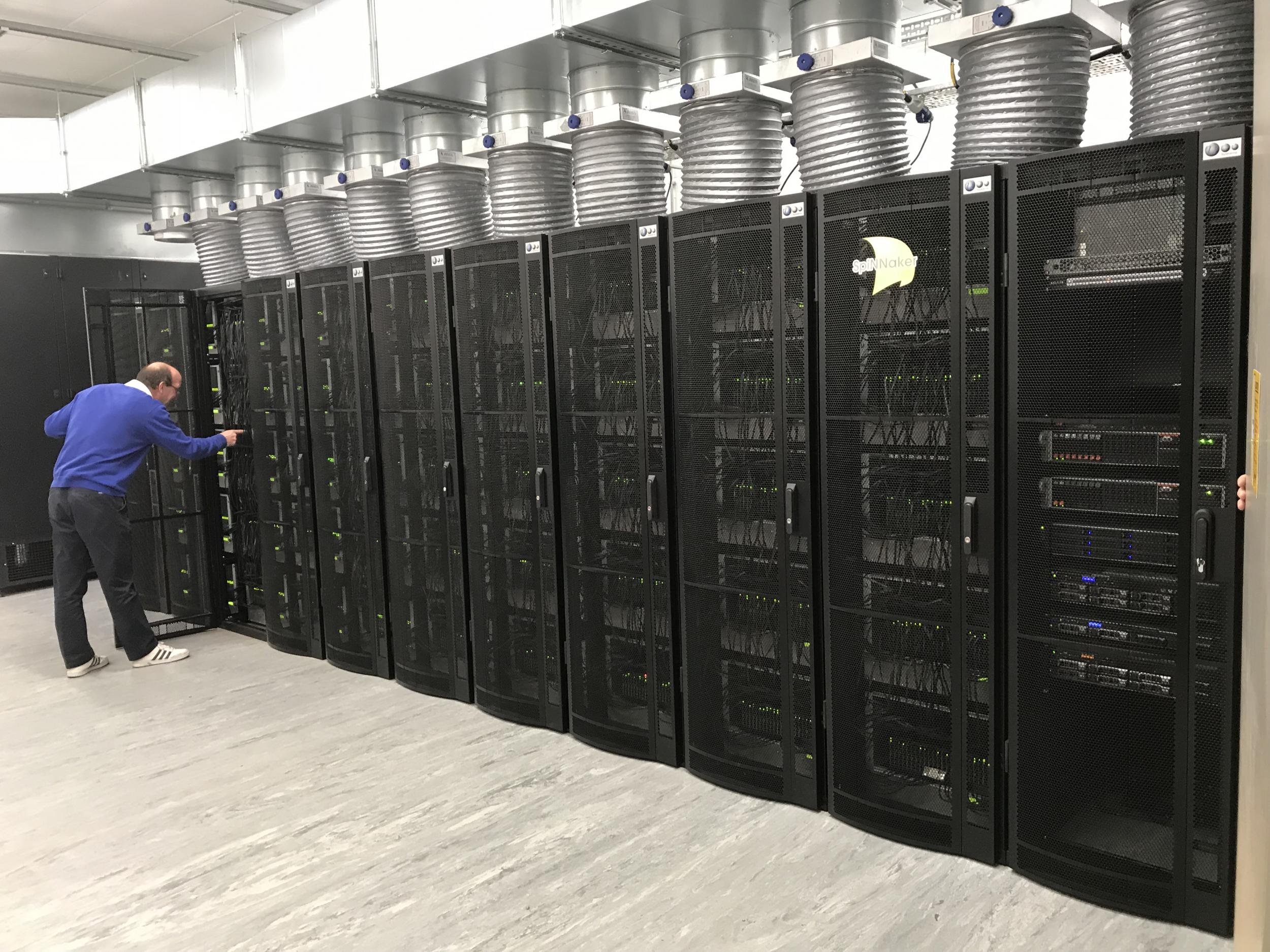'Human brain' supercomputer switched on to unlock secrets of the mind
'We’ve essentially created a machine that works more like a brain than a traditional computer, which is extremely exciting,' says Professor Steve Furber
Your support helps us to tell the story
From reproductive rights to climate change to Big Tech, The Independent is on the ground when the story is developing. Whether it's investigating the financials of Elon Musk's pro-Trump PAC or producing our latest documentary, 'The A Word', which shines a light on the American women fighting for reproductive rights, we know how important it is to parse out the facts from the messaging.
At such a critical moment in US history, we need reporters on the ground. Your donation allows us to keep sending journalists to speak to both sides of the story.
The Independent is trusted by Americans across the entire political spectrum. And unlike many other quality news outlets, we choose not to lock Americans out of our reporting and analysis with paywalls. We believe quality journalism should be available to everyone, paid for by those who can afford it.
Your support makes all the difference.After 12 years of construction and £15m in funding, a giant computer designed to mimic the human brain is finally ready to be switched on.
Built by the University of Manchester, the SpiNNaker machine is made up of one million processors capable of 200 trillion actions per second – meaning it can model more biological neurons in real time than any other machine ever built.
Unlike traditional computers, it does not communicate by sending large amounts of information from point A to point B via a standard network. Instead, it mimics the parallel communication architecture of the brain by sending small amounts of information to different destinations simultaneously.
"We’ve essentially created a machine that works more like a brain than a traditional computer, which is extremely exciting," said Steve Furber, professor of computer engineering at the University of Manchester. “The ultimate objective for the project has always been a million cores in a single computer for real time brain modelling applications, and we have now achieved it, which is fantastic.”
Short for Spiking Neural Network Architecture, the SpiNNaker is the first step towards creating a model of a billion biological neurons in real time, although even in its current state it will provide unprecedented insight into how the human brain works.
It will do this by running large-scale, real-time simulations of various regions of the brain, such as the Basal Ganglia – an area affected in Parkinson's disease.

It can also be adapted to power an artificial intelligence robot called the SpOmnibot, which is capable of navigating and interpretting objects in the real world.
"Neuroscientists can now use SpiNNaker to help unlock some of the secrets of how the human brain works by running unprecedentedly large scale simulations," Professor Furber said. "It also works as real-time neural simulator that allows roboticists to design large scale neural networks into mobile robots so they can walk, talk and move with flexibility and low power."

Join our commenting forum
Join thought-provoking conversations, follow other Independent readers and see their replies
Comments